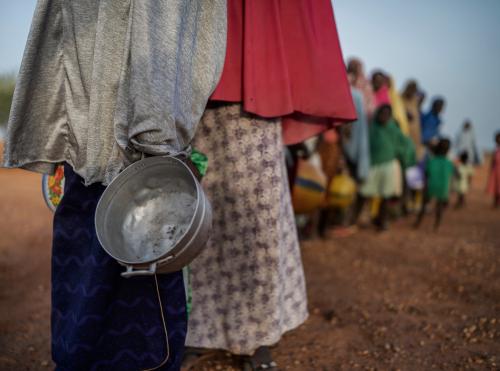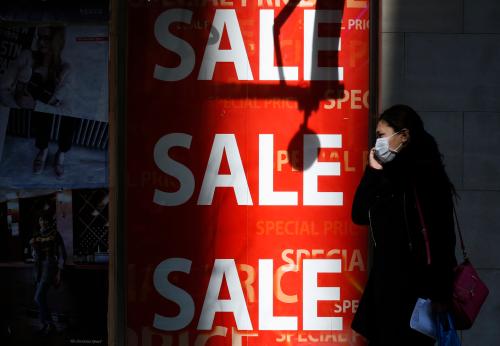Recently on Future Development, authors analyzed different arguments for and against universal basic income, including on the topics of how to better use oil revenues, universal versus targeted social programs, ending extreme poverty, providing basis needs, and boosting financial inclusion and transparency.
Discussions about universal social safety nets especially in the form of cash transfers, also known as a universal basic income (UBI), have suddenly emerged following the Swiss referendum on the policy. Various pilots have been rolled out in Kenya, India, the United States, and France, among other countries. India’s Economic Survey 2016-2017 has a full chapter on this topic.
While in developed countries the debate has been motivated by the prospective threat of technology replacing jobs, in developing countries this debate has more to do with finding a better way to tackle poverty, defined globally as those below a daily consumption level of $1.90 in 2011 purchasing power parity terms. About 11 percent of the global population, or 750 million people, live below this consumption level.
Many studies have documented how this definition of poverty tends to be narrow (Deeming and Gubhaju 2014, UNSD 2005, Pritchett 2003). I understand that this could blindside policymakers to potentially extensive problems. For example, whether a drug needs to be administered universally or to specific groups depends entirely on the persistence of the disease and its likelihood. If the disease is widespread or the likelihood of contracting the disease is high, universal immunization is a natural remedy. On similar lines, whether a universal or targeted anti-poverty program is better depends also on how pervasive and likely poverty is. A narrow definition of poverty could, therefore, have an inherent bias in favor of targeted programs.
An exercise to calculate the proportion of individuals living below two times the poverty line yields surprising results. I used data compiled by Dykstra, Dykstra, and Sandefur (2014) to make these calculations using a poverty line of $1.25 per day (2005 PPP). Figure 1 shows the results. While in low-income countries (LICs) slightly more than 50 percent of individuals are below the poverty line, in lower middle-income countries (LMICs) it is only about 27 percent. Yet, there are 165 million individuals in LICs and 1.2 billion individuals in LMICs just above the poverty line and below two times the poverty line. In other words, about 70 percent of the population in LMICs and 85 percent in LICs live on less than $2.5 per day. A universal or near-universal program could, therefore, be more suited to meeting this more extensive need for consumption security.
Figure 1: Proportion of people below the poverty line and below twice poverty line
 Source: author’s calculations based on Dykstra, Dykstra and Sandefur (2014)
Source: author’s calculations based on Dykstra, Dykstra and Sandefur (2014)
Not only are these additional individuals just above the poverty line but they are vulnerable to falling back into poverty. In fact, a salient feature of poverty is that it is dynamic, i.e., individuals move in and out of poverty, making it transient in nature (Dercon and Shapiro 2007). While acknowledging caution in interpreting and generalizing results due to the lack of lucidity in some terms and the lack of a sufficient number of panel datasets across the world, they show that between two survey periods for 21 out of 24 studies (mostly LICs) the proportion of those who were always poor forms a small minority of those who were ever poor. A similar insight emerges from the work (Zimbabwe, Pakistan, South Africa, Ethiopia, Cote d’Ivoire, and Russia) by Pritchett, Shryahadi, and Sumarto (2000). More recent analysis on poverty in Africa by Beegle et al (2016) shows that in 20 out of 26 studies transient or temporary poverty is higher than chronic poverty (always poor). Increased climate risks such as droughts and floods only increases the risk of individuals’ falling into poverty.
One is, therefore, immediately drawn to the idea of a UBI for two reasons: First, in LICs a large share of individuals are poor (for example, as high as 87 percent in Democratic Republic of Congo or 74 percent in Zambia); and second, given the dynamic nature of poverty, a UBI could provide insurance against economic shocks, an increasing concern in many poorer countries. While the jury is still out on many issues on UBI—such as financing; the political economy concerns in rolling out such a program or in replacing existing programs; and the infrastructural, institutional, and technical capacity to design and implement such a program—a broader definition of poverty changes the context in which a UBI and targeted program is to be compared.
The opinions expressed in this article are author’s own and do not reflect the view of the World Bank Group.







Commentary
Can a universal basic income meet universal basic needs?
June 12, 2017